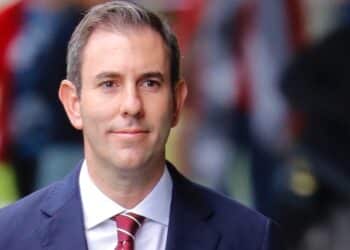According to research firm CoreData’s Future of Advice report, the average number of clients is now 136 per adviser, with those practices with strong growth plans managing on average of 142 clients per adviser.
The recent Investment Trends’ 2024 Adviser Business Model report, however, found that advisers are managing the least number of clients since the firm first conducted this research in 2007, due primarily to fee increases.
According to the report, the average adviser is now managing 99 active clients, those seen at least annually, down from the spike of 120 active in 2023. Bringing the two reports closer together is the addition of passive clients, which advisers see less than once a year, with Investment Trends’ research including 41 passive clients per adviser in 2024.
“Essentially, what we have found is that advisers have increased both [upfront and ongoing fees] in the past reporting period. So, the costs have increased marginally, but the fees have increased a lot more. Now, what that means is that advice businesses have actually become more profitable,” Investment Trends’ head of research, Dr Irene Guiamatsia, told ifa last month.
“But on the flip side, some clients have realised that they probably cannot really absorb the fee increase and have actually exited that adviser–client relationship.”
Speaking with ifa, CoreData chief executive Dean Thomas agreed that advice practices are reviewing their client lists and they have had to adjust their pricing.
“Demand is absolutely outstripping supply,” Thomas said.
“Even on the basic estimates, demand is probably over a million people in Australia that should be getting advice that are currently not able to access it because there’s just not enough capacity in the system.”
Pointing to the inevitable consequence that with under supply comes increased prices. He added that while this will lead to some clients exiting the advice relationship, there are “20 clients waiting to get advice at a higher level”.
“We are absolutely seeing an increase in the number of clients that advisers are seeing and those practices that have strong growth plans, which have a high level of technology use and high level of managed account use, their number of clients that they see are significantly more,” Thomas said.
Tools to manage more clients
Chief among the reasons that advisers are able to see more clients, he explained, is that more firms are introducing efficiency tools into their processes.
“One of the biggest areas has been the use of managed accounts,” Thomas said.
“Effectively, advisers are moving from doing their own portfolio construction for each and every client that comes in, to basically having outsourcing to an external investment manager, or getting their licensee research to do more managed accounts or SMAs that they can basically put their clients into.
“It allows them to spend more time providing the strategic overlay and the overall risk aspects of the client and using an already constructed portfolio that meets those clients’ needs, as opposed to a bespoke build, which a lot of advisers used to do.”
This trend towards efficiency is also being seen in advice firms’ use of technology, with Thomas detailing that a high level of tech adoption and use of customised tech stacks is almost “perfectly correlated” with advisers with strong growth plans.
“The correlation there is those practices, which is only about 25 per cent of the advice market, had a much higher usage and customised technology stacks,” he said.
“What I mean by that is they are putting together or integrating different components of technology to streamline the provision of advice, taking the file notes, recording of the meeting notes using AI or simply having pre-population of some of the detail from the client doing the fact find digitally and having that pre-populated into some of their advice modelling tools.”




When Annual Fee Renewal Consent Forms (that don’t exist in any other nation on earth), advisers can easily service at least 400 passive clients on top of their high-touch clients. There is a demand for $50 a month service support, not just $600 a month for high-touch retirees.
What is a “passive client”? One that you charge $50 a month and don’t speak to…
People want a relationship, many just want the option to call or a coffee meeting, or a larger review every few years, but otherwise an annual report and admin assistance as required. Paying a smaller ongoing fee is viable and affordable, but ASIC calls it a fee for no service if there isn’t an advice document every year.
Correct- anyone paying an ongoing fee must receive either a no change ROA, ROA or SOA. Anyone not doing that is delivering FFNS and will have to remediate – ouch!